
253 pages – Verlag der Apfel- Wien 2020. ISBN 978-3-85450-019-3
MAGISCHE TÖNE (Österreichische Tenöre der Nachkriegszeit) by Gregor Hauser

253 pages – Verlag der Apfel- Wien 2020. ISBN 978-3-85450-019-3
Click here for the author's youtubechannel
Born within the modern Austrian frontiers. Well, with a glaring exception.
The author is a tenor buff who has collected biographies and anecdotes on Austrian tenors born within the frontiers of the Austrian Republic. Therefore “Altösterreicher” as Dermota, Schmidt etc. who were born as citizens of the Habsburg Empire are not included as their birthplaces are outside the modern frontiers of the country. Singers like Beirer, Feiersinger or Christ started their lives in the Empire too but within the Austrian Republic. Consequently the Volksoper’s most famous tenor should not have been included. In an interesting discussion of Adolf Dallapozza’s (born 1940) career, the author tells us the singer was the youngest of nine children but “omits” to mention Dallapozza’s birthplace is Bozen (Bolzano in Italian) in Southern Tirol; Italian after the first world war and given by France to Italy for strategic reasons (Brenner pass). But a book on Austrian tenors without Dallapozza would be a hard sell. So far for principles.
UNKNOWN
Unless you lived in Vienna for many decades, I don’t think you will ever have heard of Schager, Grabner, Krotthammer, Sperlbauer, Equiluz, Köstlinger and Supper. I admit they are totally unknown to me (some were comprimario’s). Well, I’m not alone. In the 2.547 pages of Jürgen Kesting’s “Die Grossen Sänger” no one of these gentlemen even deserves one word. On Youtube Mr. Hauser has opened a “Magische Töne channel” and the reader can judge him- or herself if he/she wants to look for further examples of the art of these unknown tenors.
Personally I don’t think I’ve missed a lot. Among the other tenors some will be somewhat more vaguely familiar for Anglo-Saxon readers though there is not a single world famous name to be found in the list. In the German speaking world and its fringes like the Dutch speaking countries The Netherlands and Flanders a few are known for their recordings; mostly in operetta like Rudolf Christ or Karl Terkal. On a world scale others are one recording wonders like Waldemar Kmennt (Karajan’s Fledermaus) or Beirer (the wretched Otello on a video with Renata Tebaldi). Kmennt of course recorded quite a lot but I don’t think his recitals were widely available outside Central-Europe. Amusing is the story of Hubert Grabner. He even reached Salzburg as tenor soloist in some masses but never gave up his original career as a butcher. Later on he combined a meat factory with his career as a singer. The author knew and knows a lot of these tenors personally and therefore he tells us some very funny stories .
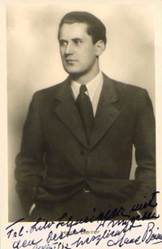
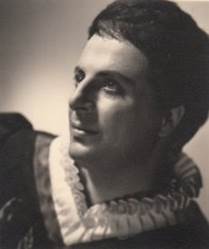
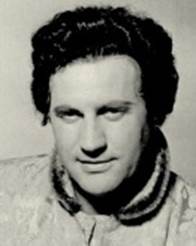
(Beirer-Kmennt-Terkal)
BETTER KNOWN
The names of Kmennt, Feiersinger and Beier more likely will ring a bell with those opera lovers who once had a subscription to the British "Opera magazine" though the voices of the two Wagner tenors rarely were mentioned as a thing of beauty; at their best they were utility singers. Feiersinger even reached the Met (4 performances in 1959). Beier got to La Scala and San Carlo and is probably remembered for a Parsifal in Rome with young Meneghini-Callas. Does this make their biographies uninteresting? Definitely not. By now I’ve had enough of stories of world stars earning triumphs at the Met, Chicago, Covent Garden, Paris etc. It makes for interesting reading to learn about the struggles, hopes, deceptions of lesser singers; on how difficult it is to make a career; what pains it took to promote from small German theatres to marginally bigger opera houses. It makes for amusing reading how some of them had to struggle with Karajan in his Viennese years (and the conductor struggling with them when there was no Vickers available and he had to do with lesser luminaries).
For some tenors Karajan is the fly in the ointment. They belonged to the famous Vienna ensemble of the late forties and fifties at the time when “Figaro’s Hochzeit” was still performed in German (as were all other operas). Some singers survived the conductor’s onslaught when he became general manager of the Vienna State Opera as they were the best he could find for Mozart. But lyric and spinto tenors thrive on Verdi, Puccini, Donizetti, Giordano etc. and Karajan got Di Stefano (a lot), Corelli, Del Monaco and the Austrians were no match for them in this repertoire and had to seek shelter in smaller houses; especially in the Wiener Volksoper.
There they combined opera and operetta and sometimes extensively recorded operetta selections on cheaper labels or sang their roles on radio. The “Hamburger Archiv für Gesangkunst” has brought out a lot of those radio performances and published several live recitals culled from radio; often with help from the singers themselves. Especially fine are Karl Terkal and Rudolf Christ. They have the style in their blood and combine it with free ringing lyrical voices that will often surprise. I don’t say they are on a par with Wunderlich and Gedda but they are not charmless lightweights.
UNDERRATED KURT SCHREIBMAYER AND ADOLF DALLAPOZZA
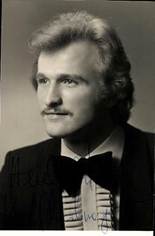
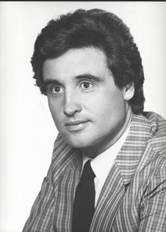
Two chapters especially interested me. First there is a discussion of the much underrated Kurt Schreibmayer. I heard him as a brilliant Max in Der Freischütz in Liège and I was surprised his name was not better known. This was no barking tenor but a singer with a manly and voluminous sound showing legato, power and good top notes. Later on I was delighted to witness how fine and with the necessary schmaltz he sang and acted the tenor role in Wiener Blut in Vienna’s Volksoper.
The author tells us Schreibmayer was very critical of his own performances and didn’t go all the way to Wagner’s big boys as many German-language tenors (without his talent) did. He sang for many years at Bayreuth but never in a title role. A pity and an even greater pity he almost made no recordings. In Germany and Austria it is no shame to switch to comprimario parts when the voice is no longer able to respond to more difficult parts. No famous Italian tenor would stoop that way ( well, Ugo Benelli did) but Schreibmayer did and that road was followed as well by Adolf Dallapozza.
His name probably will be the best known in the book. I heard him in the flesh in 1967 in an operetta concert at Flemish Public Radio. I was immediately won over. This was a magnificent fresh young voice with an easy top and a fine warm timbre. Indeed, one year after Wunderlich’s early death I was sure this was going to be his successor. Moreover Dallapozza (and his name tells us he has Italian forebears) had a warmer sound than Wunderlich.
Soon he became star of the Volksoper and then got a promotion to the Staatsoper. And there things went wrong after a few seasons. He got more comprimario than title roles and once again returned to his former artistic home where he became the star tenor.
There are several CD boxes of his recordings to be found on “Hamburger Archive” and they prove how fine a tenor he was. Luckily he made a lot of complete operetta recordings and took over Gedda’s mantle when the Swede was no longer able to compete with his older self.
Dallapozza’s Goethe in Lehar’s Friederike ought to be heard. I’d gladly exchange all of Berg, Zemlinksy, and Janacek recordings for Lehar’s “Singspiel” and not be the poorer for it.
All in all, I enjoyed Mr. Hauser’s book a lot as it is well written and well judged. He admires his tenors but he doesn’t try to put them on a pedestal with their contemporaries Del Monaco, Bergonzi, Corelli or their successors Domingo and Pavarotti. Recommended.
Jan Neckers, September 2020